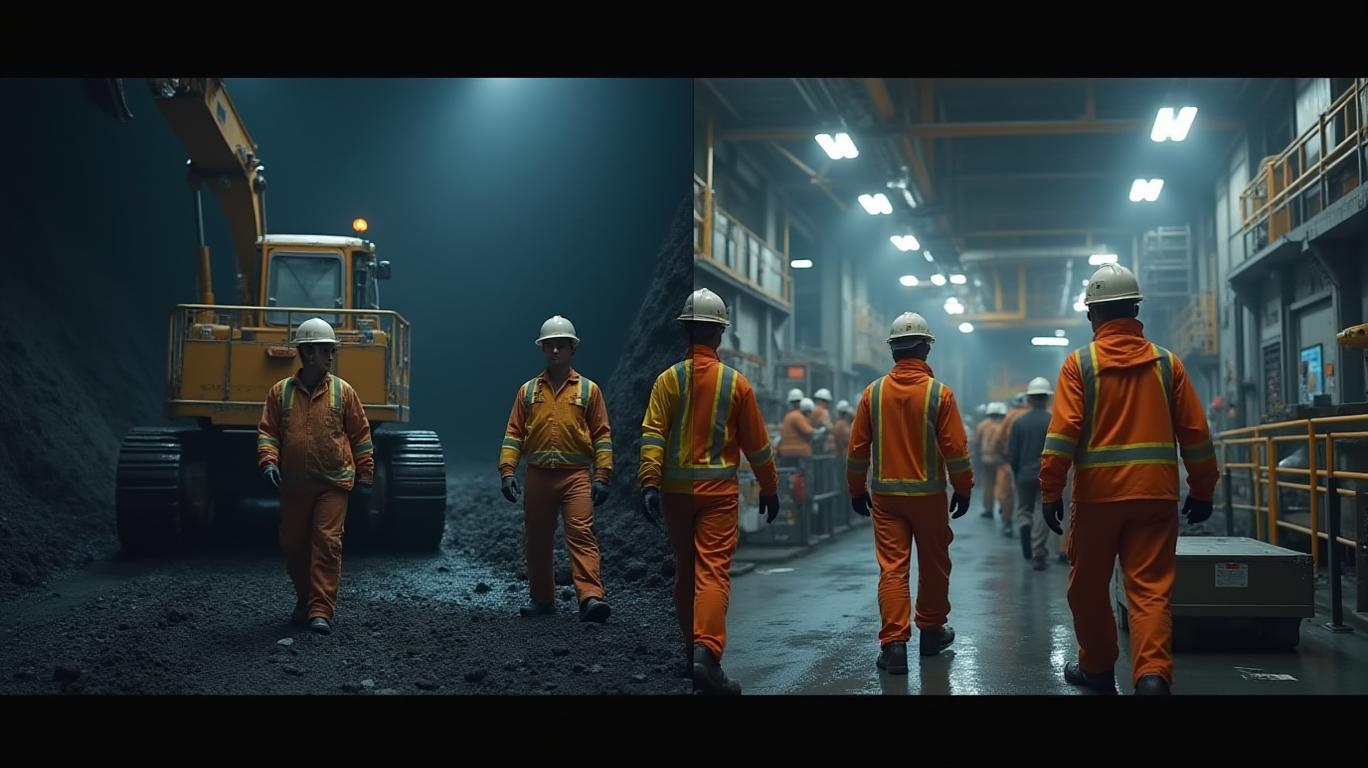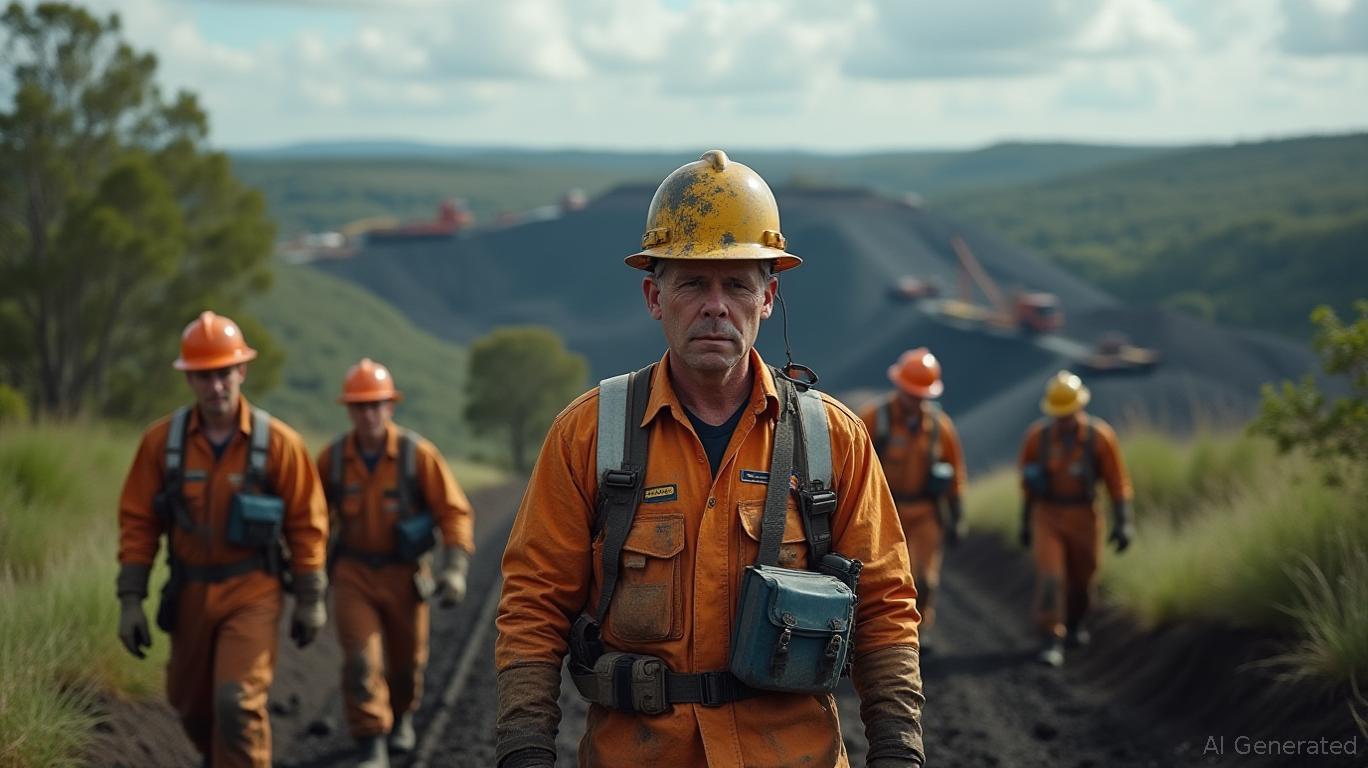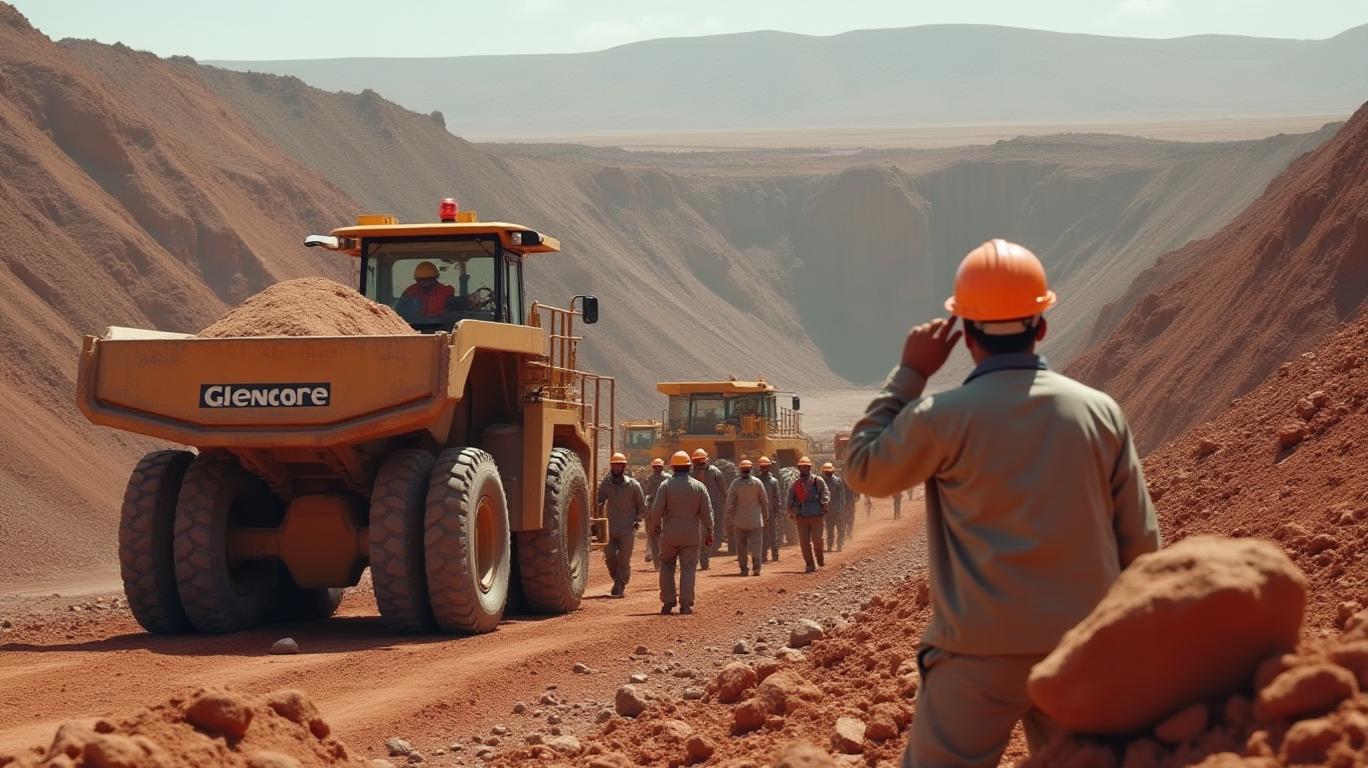Glencore’s Strategic Shift: Coal Cuts and Commodity Opportunities
In a move signaling a strategic pivot toward higher-margin and demand-driven commodities, Glencore has revised its 2025 energy coal production guidance downward by 5%, while maintaining robust targets for steelmaking coal, copper, and other critical metals. The decision to reduce energy coal output at its Cerrejón mine in Colombia highlights the company’s efforts to rebalance its portfolio amid shifting global energy dynamics. Yet, this adjustment comes alongside resilience in its metallurgical coal division and cautious optimism about copper’s long-term prospects. Here’s what investors need to know.
Energy Coal: A Deliberate Retreat
Glencore’s energy coal production guidance for 2025 now stands at 87–95 million tonnes (mt), down from the original 92–100 mt range. This reduction, driven by a 5–10 mt annual cut at Cerrejón, reflects a proactive strategy to address oversupply risks in a market increasingly pressured by energy transition policies. Q1 2025 production fell 7% year-over-year to 23.4 mt, largely due to the closure of two Australian mines.
While this reduction may disappoint coal-heavy investors, CEO Gary Nagle framed it as a necessary step: “Market rebalancing is key to sustaining value in energy coal.” The shift underscores Glencore’s broader focus on commodities critical to industrial and green energy infrastructure.

Steelmaking Coal: A Bright Spot
The company’s metallurgical coal division is a standout performer. Guidance remains unchanged at 30–35 mt, with Q1 output soaring 493% year-over-year to 8.3 mt, thanks to the acquisition of Canada’s Elk Valley Resources (EVR). EVR alone contributed 6.6 mt in the first quarter, while Australian operations saw a 21% rise in production due to operational efficiencies.
Glencore’s steelmaking coal strategy aligns with global demand for high-grade metallurgical coal, used in steel production—a sector less disrupted by energy transition trends. The inclusion of EVR’s capacity positions Glencore as a dominant player in this space, with 95% of EVR’s output dedicated to steelmaking.
Copper: Navigating Hurdles for a Strong H2
Copper’s 2025 guidance (850,000–910,000 tons) remains intact despite a 30% Q1 production slump to 167,900 tons, driven by operational challenges at key mines like Collahuasi and Antapaccay. Management attributes the dip to lower ore grades, water constraints, and maintenance delays but expects a rebound in the second half.
A 58% weighting toward H2 production is underpinned by plans to resolve bottlenecks:
- Collahuasi: Improved water availability and pit reconfiguration could add +29,000 tons.
- Antapaccay: Reduced strip ratios may boost output by +20,000 tons.
- KCC: Transition to run-of-mine ore could increase throughput by +16,700 tons.
Other Commodities: Stability Amid Volatility
- Cobalt: Guidance holds at 40–45 kt, with Q1 production rising 44% to 9.5 kt despite a ban on Democratic Republic of Congo (DRC) exports. Production will be stored until the ban lifts, but physical output remains on track.
- Zinc: 930–990 kt guidance is supported by a 4% Q1 increase to 213.6 kt, driven by stronger grades at Peruvian mine Antamina.
- Nickel: 74–86 kt guidance remains unchanged despite a 21% Q1 drop, as reduced output at Koniambo (now in care-and-maintenance mode) is accounted for in base-period adjustments.
Market Risks and Investor Sentiment
Glencore’s shares fell 3.3% in April to 255.25 pence, down 28% year-to-date, reflecting investor skepticism over its ability to meet copper targets and navigate geopolitical risks. Tariff uncertainties, particularly in the U.S., could disrupt trade flows, though Glencore’s global marketing arm is poised to capitalize on reoriented supply chains.
Conclusion: Positioning for the Transition Economy
Glencore’s strategic adjustments—cutting energy coal while bolstering metallurgical coal and copper—reflect a calculated shift toward commodities underpinning both traditional and green industries. With steelmaking coal production surging post-EVR acquisition and copper poised for a H2 recovery, the company is well-positioned to capitalize on structural demand.
However, risks remain. Copper’s Q1 underperformance and cobalt’s storage constraints highlight execution challenges. Investors should monitor H2 production metrics closely.
Key data points reinforce the thesis:
- Steel Coal: EVR’s contribution alone could fill ~26 mt of the 30–35 mt guidance, leaving room for upside.
- Copper: A 58% H2 weighting means the latter half must deliver ~500,000 tons to meet the low end of guidance—a tall order but achievable with operational fixes.
- Valuation: At a 4.2x EV/EBITDA multiple, Glencore trades at a discount to peers, suggesting a potential buying opportunity if H2 targets are met.
In sum, Glencore’s pivot is a strategic move to align with long-term demand trends. While near-term volatility persists, its diversified portfolio and scale position it to thrive in a transitioning economy—if operational execution matches ambition.


_ea5fa73f1750203501414.jpg)
_dab570481750202897772.jpg)







